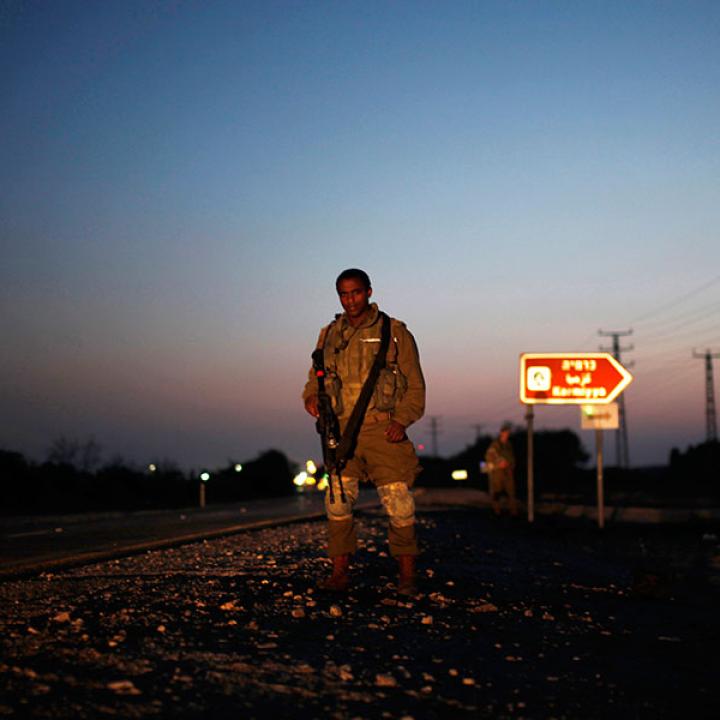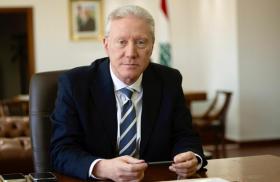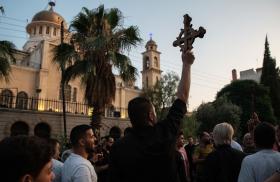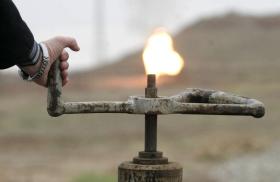
- Policy Analysis
- PolicyWatch 4038
Will Israel’s New “Chariots” Plan Trample or Strengthen Hamas?

Israel sees its next operation in Gaza as a means to decisively damage Hamas’s military and governance capabilities while freeing the rest of the hostages, but the plan might also produce a lengthy occupation and expanded guerrilla warfare.
As Israel’s nascent “Gideon’s Chariots” operation in Gaza takes shape, developments connected to President Trump’s Middle East visit this week are raising doubts about the extent of U.S. support for the plan. Over the past few days, the Trump administration reportedly engaged in dialogue with Hamas to secure the release of Israeli American hostage Edan Alexander. And during his visit to Saudi Arabia, he stated, “We continue to work to get [the Gaza] war ended as quickly as possible,” calling the situation “horrible.” Indeed, the United States may seek to leverage the current momentum to negotiate a final ceasefire in Gaza, the release of hostages and prisoners, and the beginnings of a framework for shaping the “day after.”
The key to assessing how events will unfold lies in two core questions: How determined is Israel to carry out the operation even if it means losing U.S. support? And how far is the United States willing to go on integrating Hamas into postwar Gaza?
Gideon’s Chariots: Components and Logic
Formally approved by Israel’s security cabinet on May 6, Operation Gideon’s Chariots aims to defeat Hamas, establish a new situation in Gaza with an ongoing Israeli military presence, and secure the return of the hostages. Although the plan might indeed persuade Hamas to release some hostages in exchange for time-bound ceasefires, it also poses numerous risks, including prolonged Israeli occupation of Gaza, growing guerrilla resistance, Hamas rearmament, and potential problems stemming from UN, European, and Arab opposition to the operation.
On paper, the plan is comprehensive, integrating military, diplomatic, and psychological pressure to secure Israel’s goals. Although Jerusalem has not detailed its preferred postwar arrangements for Gaza—mainly due to internal disagreements and lack of full coordination with Washington—the plan lays out certain preconditions for the “day after,” namely: defeating Hamas and Palestinian Islamic Jihad; establishing Israeli military control over Gaza (which Prime Minister Binyamin Netanyahu has made clear will require occupation); demilitarizing Gaza; dismantling Hamas’s governing capabilities; relocating the population to southern Gaza, where humanitarian aid will be distributed; and freeing the hostages (which appears to be last in priority).
The campaign will be structured in three phases, shaped in part by political and operational constraints such as President Trump’s visit to the region (scheduled to end May 16) and Israel’s military readiness. These stages are also designed to allow for potential “off-ramps” if Hamas agrees to Israel’s terms:
- Preparation and initial pressure (currently under way): This phase involves destroying Hamas’s military and governance infrastructure, as well as preparing southern Gaza to accommodate displaced civilians and deliver humanitarian aid with the assistance of American companies under Israeli security cover. It offers Hamas the opportunity to gradually release hostages (under a framework proposed by U.S. envoy Steve Witkoff) as a condition for halting further escalation.
- Population movement: In this phase, Israel would aim to transfer Gaza’s civilian population to designated “sterile” zones in the southwest while screening out Hamas operatives.
- Ground maneuver: In the final phase, the Israel Defense Forces (IDF) would enter cleared areas, eliminate remaining Hamas members, and establish a prolonged presence.
The plan highlights five mechanisms for pressuring Hamas, some of them yet to be fully activated:
- Establish permanent Israeli occupation of certain areas, especially in perimeter zones and corridors bisecting Gaza.
- Evacuate the population to areas severed from Hamas influence.
- End Hamas access to humanitarian aid so the group can no longer control or exploit it.
- Fragment Hamas’s command and control across different regions.
- Exert psychological pressure on Hamas leaders and the broader public by highlighting the costs of armed resistance.
Diminishing Hamas’s Governance and Military Capabilities
Since the war began, Hamas has lost a substantial portion of its military capabilities and previously uncontested control over Gaza. Growing pockets of public protest have emerged against the group alongside symptoms of chaos and lawlessness, including the looting of aid warehouses. To reassert authority, Hamas has created new police and internal security forces and resorted to harsh enforcement, violent crackdowns, and even public executions.
Nevertheless, in the absence of a viable alternative governing body—either de facto or anticipated—this erosion in Hamas authority remains only partial. Ministries and municipalities controlled by the group continue to provide some essential services, often in coordination with international aid agencies. Hamas is also still supplying basic resources to its cadres, often by diverting humanitarian aid—a practice that has further fueled local resentment.
Moreover, despite the substantial damage to its military strength, Hamas retains the capacity for recovery on that front. In January, U.S. intelligence assessed that the group had recruited some 15,000 new operatives during the war, while its fatalities were estimated at 20,000. The principal blow has been the loss of its ability to operate in large paramilitary formations like those used during the October 7 attack. Yet its ability to conduct guerrilla and terrorist operations (e.g., sniper attacks, antitank fire, placement of improvised explosive devices) remains intact. These tactics could become particularly effective against an ongoing IDF presence. Intensified Israeli air and ground activity in Gaza could also facilitate the rearmament of Hamas; according to the IDF, the group is already repurposing unexploded remnants of air munitions into powerful IEDs.
Could the Plan Prompt a Shift in Hamas’s Position?
Because Gideon’s Chariots does not clearly define a desired end-state for Gaza, assessing its potential to foster an agreement with Hamas or other parties is difficult. Yet the operation’s stated plans for “de-Hamasifying” Gaza—on which there is a broad Israeli consensus—essentially preclude any long-term negotiated agreement with the group.
For its part, Hamas’s identity as an Islamist “resistance” movement means that it cannot accept capitulation to the “Zionist enemy” politically or ideologically. A permanent Israeli occupation and military administration (whether declared or de facto) would give the movement a renewed opportunity to rally Palestinian public support—within the West Bank as well as Gaza—around armed resistance as the only appropriate strategy for national struggle.
To be sure, Hamas may show tactical flexibility as Israel begins implementing the new plan, particularly in terms of agreeing to partial hostage deals, temporary ceasefires, and prisoner exchanges. Mounting Israeli military pressure and the erosion of the hostage “lever” could also soften the movement’s near-term stance. In the end, however, Hamas is unlikely to agree to a full hostage release without firm international guarantees regarding a multi-year ceasefire, Israeli withdrawal from Gaza (even if phased), and the establishment of a civilian Palestinian governing authority in Gaza. Crucially, Hamas will seek to maintain influence over this authority even if the group is formally excluded from it.
Operational Risks and Possibilities
Whatever the long-term prospects of Gideon’s Chariots, fully implementing the plan could substantially erode Hamas’s remaining military capabilities and governance control in the short to medium term. It might also disrupt the group’s leadership composition and territorial control—though not necessarily its ideology or cohesion.
As noted above, Israeli operations could induce Hamas to show tactical (though not strategic) flexibility even prior to full implementation of the plan. This could entail accepting conditions the group has previously rejected, such as releasing a limited number of hostages in exchange for time-bound ceasefires. Yet Israel’s plan does not appear to prioritize returning all of the hostages—the government’s greatest moral obligation to its people.
The ability to leverage the plan’s implicit off-ramps will largely depend on whether the United States and regional actors are willing to exert greater pressure on both Israel and Hamas. Absent such intervention, the unfolding operation could entrench maximalist positions on each side. Full implementation of Gideon’s Chariots would likely produce a prolonged Israeli occupation in Gaza that would be met with a persistent Hamas-led insurgency. Beyond the humanitarian and security toll, such a development would entrench the Gaza issue as a political obstacle to many of Washington’s broader regional goals—including those the Trump visit is intended to promote.
It is also unclear if the plan’s provisions for humanitarian aid distribution are sufficient. Israeli officials currently envision four logistics centers: three in Rafah and one in the Netzarim Corridor, each operated by American companies and secured by the IDF. Yet will these centers be able to function while the IDF is operating in various parts of Gaza? How will the aid reach Palestinians located in areas far from the centers? Moreover, Hamas will likely attempt to sabotage distribution by attacking soldiers and aid workers, which could eventually force the IDF to take on this task despite objections from IDF Chief of Staff Eyal Zamir.
For its part, the UN Office for the Coordination of Humanitarian Affairs (OCHA) has criticized the plan on several fronts and refused to participate in its implementation, stating that Israel’s approach would violate the country’s obligations under international law, create serious security risks, and fail to reach many of the most vulnerable residents. The United Arab Emirates has likewise rejected Israeli and U.S. requests to participate in distributing aid during the operation, which may prevent foreign entities from taking part in the plan while strengthening Hamas’s legitimacy to act against it. Israel’s announcement of Gideon’s Chariots also seemingly spurred the Netherlands to ask the European Union to review the EU-Israel Association Agreement, a trade pact, on the grounds that Israel is violating international humanitarian law in Gaza. Such examples indicate that the operation will face harsh criticism abroad, which no U.S.-Israeli aid operation can fully mitigate.
Ultimately, the Trump administration may conclude that whatever Israel can achieve militarily via Gideon’s Chariots is not necessarily worth the cost to other U.S. interests in the region. Whether Israel goes ahead with all phases of the operation or accepts some degree of Hamas involvement in postwar Gaza, the movement will likely maintain a significant presence in the area. To prevent Hamas from becoming dominant and reduce its influence on the Gaza public, interested parties must find an alternative governing body that can assume responsibility for civilian control and public order.
Neomi Neumann is a visiting fellow at The Washington Institute and former head of the research unit at the Israel Security Agency.


